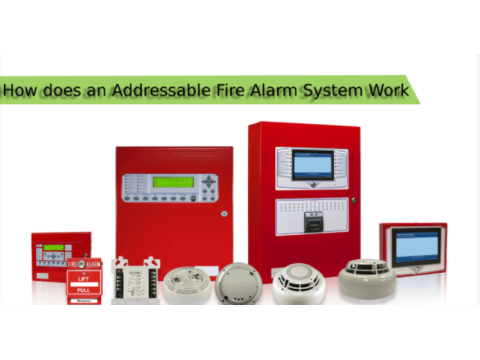THRESHOLD FIRE ALARM SYSTEMS
Threshold fire alarm systems rely on preset limits for fire detection. When a detector registers values exceeding these limits—such as smoke density, temperature, or flame intensity—it triggers an alarm.
WORKING PRINCIPLES
In threshold systems, detectors operate autonomously, switching from a "normal" state to a "fire" state when a parameter exceeds its threshold:
- Smoke Detectors: Triggered by increased optical density in the air.
- Heat Detectors: Activate at specific temperature levels.
- Flame Detectors: Respond to infrared or ultraviolet radiation.
The control panel (also called a fire alarm panel) processes these signals, generating notifications and activating fire safety mechanisms.
Single vs. Two-Threshold Systems
- Single Threshold: Alarms trigger with a single detector activation.
- Two-Threshold: Requires multiple detectors to activate before raising a fire alert. This reduces false alarms and enhances reliability.
TYPES OF CONNECTIONS
Increasing Current Systems
- Detectors reduce resistance when triggered, increasing loop current.
- The control panel monitors these changes to identify alarm states.
Decreasing Current Systems
- Detectors break the circuit when triggered, reducing current flow.
- Less common but offers alternative design possibilities.
THRESHOLD FIRE DETECTORS
Advantages
- Cost-Effective: Affordable hardware and installation.
- Ease of Use: Simple configuration and maintenance.
Limitations
- Static Detection: Cannot monitor real-time parameter changes.
- Limited Functionality: Lacks advanced features like dynamic fire analysis.
ADDRESSABLE VS. THRESHOLD SYSTEMS
Threshold Systems
- Basic, binary operation: "normal" or "fire."
- Suitable for small-scale setups with minimal fire risks.
Addressable Systems
- Provide detailed data on detector location and performance.
- Enable dynamic fire analysis, enhancing response accuracy.
WHEN TO CHOOSE A THRESHOLD SYSTEM
Threshold fire alarm systems are ideal for:
- Small Businesses or Homes: Where cost efficiency is crucial.
- Low-Risk Environments: Minimal fire hazards reduce the need for advanced features.
For more complex setups, consider addressable systems for enhanced functionality.
CONCLUSION
Threshold fire alarm systems remain a reliable, affordable choice for basic fire safety. However, for larger or high-risk environments, advanced solutions like addressable or analog systems offer better performance and accuracy.
For premium fire alarm solutions tailored to your needs, visit safsale.com—your trusted partner in fire safety systems!

